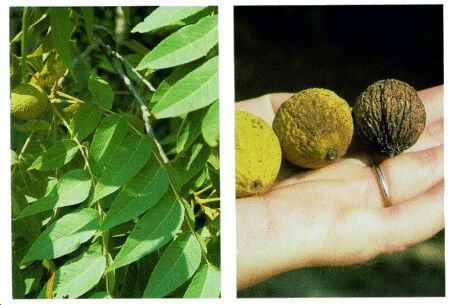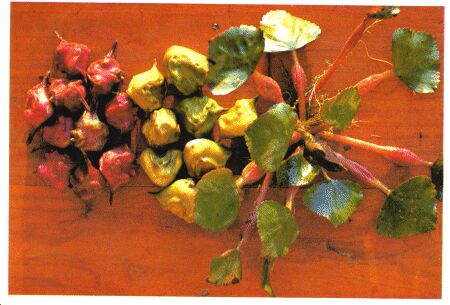 |
 |
 |
 |
| APPENDIX B |

Description: Walnuts grow on very large trees, often reaching 18 meters tall. The divided leaves characterize all walnut spades. The walnut itself has a thick outer husk that must be removed to reach the hard inner shell of the nut.
Habitat and Distribution: The English walnut, in the wild state, is found from southeastern Europe across Asia to China and is abundant in the Himalayas. Several other species of walnut are found in China and Japan. The black walnut is common in the eastern United States.
Edible Parts: The nut kernel ripens in the autumn. You get the walnut meat by cracking the shell. Walnut meats are highly nutritious because of their protein and oil content.
Other Uses: You can boil walnuts and use the juice as an anti-fungal agent. The husks of "green" walnuts produce a dark brown dye for clothing or camouflage. Crush the husks of "green" black walnuts and sprinkle them into sluggish water or ponds for use as fish poison.

Description: The water chestnut is an aquatic plant that roots in the mud and has finely divided leaves that grow underwater. Its floating leaves are much larger and coarsely toothed. The fruits, borne underwater, have four sharp spines on them.
Habitat and Distribution: The water chestnut is a freshwater plant only. It is a native of Asia but has spread to many parts of the world in both temperate and tropical areas.
Edible Parts: The fruits are edible raw and cooked. The seeds are also a source of food.
| Updated: 12 January 2008 |
|
Born on 09 January 2000 |